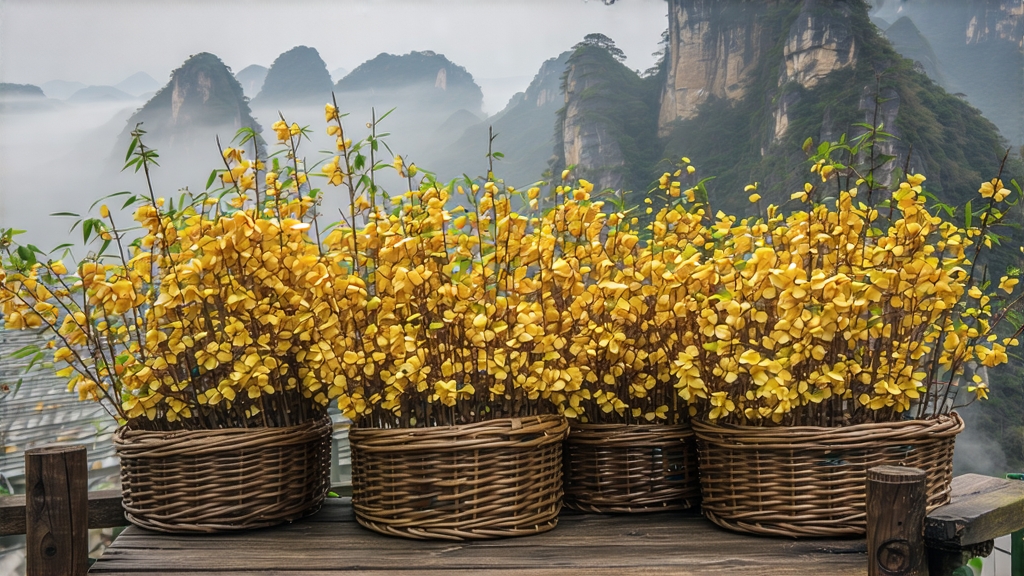
Tucked high in the mist-veiled Dabie Mountains of western Anhui Province, a tiny county named Huoshan guards one of China’s most discreet tea treasures—Huoshan Huangya, the “yellow bud” that once traveled in silk-lined crates to the Forbidden City. While green tea commands global fame and pu-erh dominates investment circles, yellow tea remains the quiet aristocrat of Chinese leaf: rare, labor-intensive, and steeped in lore that even many mainland drinkers barely know. To encounter Huoshan Huangya is to taste a vanished era when emperors rewarded loyal ministers with cakes of compressed gold-colored leaves, and mountain monks measured the passage of spring by the fragrance rising from bamboo trays.
Historical scrolls first mention “Huoshan yellow sprout” during the Tang dynasty (618-907), but the tea’s apotheosis arrived under the Ming. In 1590 the Wanli Emperor, chronically ill and disenchanted with ginseng, received a gift of fifty liang (roughly three kilograms) of early-spring buds from Huoshan. Court physicians recorded that the sovereign slept more soundly and digested rich palace fare with ease after drinking the infusion. By 1646 the Qing had formalized the tribute, dispatching eunuchs every Qingming festival to escort the first picking directly to Beijing. Farmers were forbidden to sell the tea privately; violation meant flogging and confiscation of land. Thus Huoshan Huangya acquired the nickname “jin ya” (golden sprout), a currency more coveted than silver.
Botanically the tea belongs to the small-leaf Camellia sinensis var. sinensis, but centuries of selection have produced a local cultivar called “jiu long zhong” (nine-dragon bush) whose buds grow unusually stout, downy, and golden-green even before processing. The microclimate is decisive: Huoshan sits at 31°N latitude, 300–800 m above sea level, where nocturnal fog slows photosynthesis, concentrating amino acids. Day-night temperature swings can exceed 15 °C in April, coaxing the plants to store sugars in the tender apex. Soil is yellow-brown laterite, mildly acidic and laced with quartz; drainage is so sharp that roots struggle, yielding smaller, more aromatic leaves—an agricultural echo of Europe’s stressed-vine viticulture.
Unlike green tea’s straightforward kill-green, yellow tea demands a second, secretive phase known as menhuang—literally “sealed yellowing.” After the usual withering and firing, the half-dry leaf is piled in linen sacks and left to breathe in a humid 28 °C room for 24–72 hours. Enzymatic oxidation proceeds slowly, chlorophyll degrades into pheophytin, and catechins dimerize, rounding the astringency that characterizes green tea while generating floral lactones reminiscent of lilies and steamed corn. A master can judge the moment by aroma alone: when the green grassy top-note recedes and a honey-like bass emerges, the leaf is spread thinly on bamboo and given a final charcoal bake. The entire cycle repeats three times—an artisanal waltz that shrinks the harvest by 35 % and explains why authentic Huoshan Huangya rarely leaves Anhui.
The picking window is brutal: only three days around Qingming when each bud still hides inside a tight fish-scale of two leaves. One kilogram of finished tea requires 42,000 such shoots, all plucked before 9 a.m. while dew lingers. Experienced pickers use a twisting motion that snaps the stem without bruising the adjacent leaf, dropping the harvest into wicker baskets lined with fresh banana leaves to prevent oxidation en route to the village workshop. There, elderly women sort under kerosene lamps, discarding any sprout longer than 2.5 cm or lighter than a pale jade hue—imperial standards unchanged since 1751.
Processing begins with a 3-minute tumble in a 160 °C wok, hot enough to denature polyphenol oxidase yet brief enough to keep moisture above 60 %. The leaves emerge limp and jade-green, emitting a scent akin to grilled edamame. Next comes the first menhuang: 5 kg batches are wrapped in steamed cotton cloth, stacked no higher than 15 cm, and rested on wooden racks above slowly burning charcoal. Every two hours the pile is flipped, allowing latent heat and humidity to coax a mellow yellow. The second firing lowers leaf moisture to 20 %, followed by another menhuang of 18 hours. A